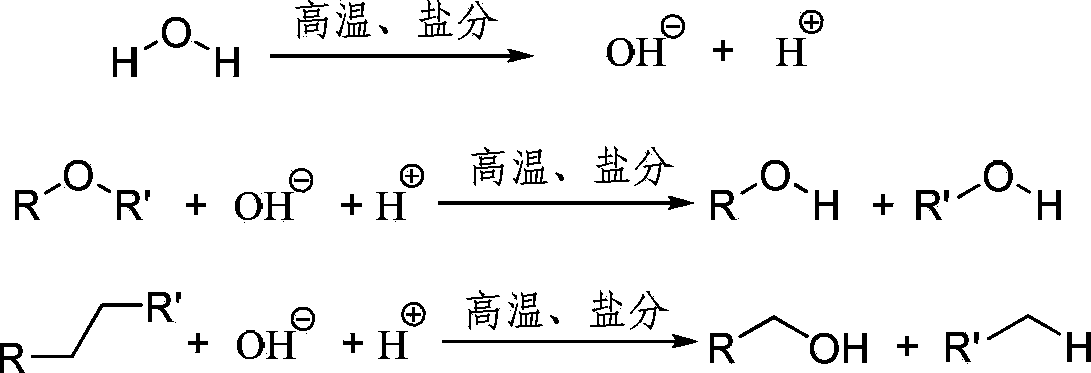Method for degrading lignin in seawater
A lignin and seawater technology, applied in the field of energy, can solve the problems of destroying the benzene ring structure, reducing the utilization value, high cost of raw materials and high separation cost, and achieve the effect of safe and simple operation
- Summary
- Abstract
- Description
- Claims
- Application Information
AI Technical Summary
Problems solved by technology
Method used
Image
Examples
Embodiment 1
[0019] Mix 10 g of Alcell lignin with 100 ml of natural seawater and transfer to an autoclave (Parr 4740). After replacing the air with nitrogen 3-5 times, heat to 260°C. After reacting for 8 hours, stop stirring, drop to room temperature, add 40mL of chloroform to extract the reaction solution in 3 times respectively, combine them, and distill to obtain 9.0 grams of organic liquid mixture, accounting for 90% of the feeding amount. The product was analyzed by chromatography-mass spectrometry. The main products were coniferyl alcohol (40%), coumaryl alcohol (35%), vanillin (12%), syringyl derivatives (8%), and other products 5% (including dimers and trimers).
Embodiment 2
[0021] Mix 3 g of Alcell lignin with 10 ml of seawater and transfer to a pressure-proof airtight container (Swagelokminitube). After replacing the air with nitrogen 3-5 times, heat to 350°C. After reacting for 20 hours, stop stirring, lower to room temperature, add 40mL of petroleum ether extraction reaction solution in 3 times respectively, combine, and distill to obtain 2.5 grams of organic liquid mixture, accounting for 83% of the feeding amount. The product was analyzed by chromatography-mass spectrometry. The main products were coniferyl alcohol (38%), coumaryl alcohol (36%), vanillin (15%), syringyl derivatives (6%), and other products 5% (including dimers and trimers). From the experimental results, using the same raw material, changing the reaction conditions has little effect on the distribution of products, and the proportion of product units is determined by the properties of lignin itself.
Embodiment 3
[0023] Mix 6 g of Alcell lignin with 10 ml of seawater and transfer to a pressure-tight container (Swagelokminitube). After replacing the air with nitrogen 3-5 times, heat to 350°C. After reacting for 20 hours, stop stirring, drop to room temperature, add 40mL petroleum ether extraction reaction solution respectively in 3 times, combine, and distill to obtain 3.2 grams of organic liquid mixture, accounting for 53% of the feeding amount. The product is analyzed by chromatography-mass spectrometry, and the main products are coniferyl alcohol (34%), coumaryl alcohol (35%), vanillin (17%), syringyl derivatives (5%), and other products 9% (including dimers and trimers). From the experimental results, increasing the amount of lignin, the yield of organic liquid products decreased significantly, and the amount of polymers also increased.
PUM
 Login to View More
Login to View More Abstract
Description
Claims
Application Information
 Login to View More
Login to View More - R&D
- Intellectual Property
- Life Sciences
- Materials
- Tech Scout
- Unparalleled Data Quality
- Higher Quality Content
- 60% Fewer Hallucinations
Browse by: Latest US Patents, China's latest patents, Technical Efficacy Thesaurus, Application Domain, Technology Topic, Popular Technical Reports.
© 2025 PatSnap. All rights reserved.Legal|Privacy policy|Modern Slavery Act Transparency Statement|Sitemap|About US| Contact US: help@patsnap.com

